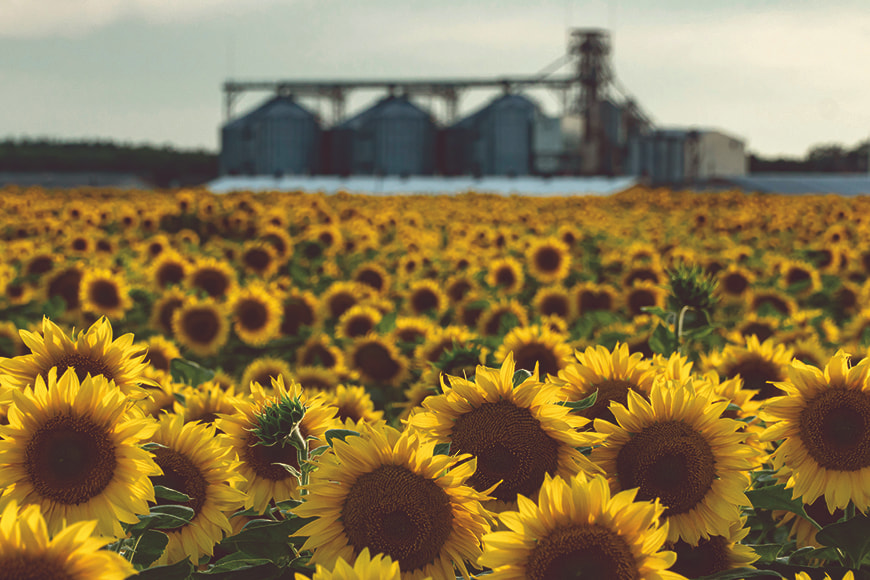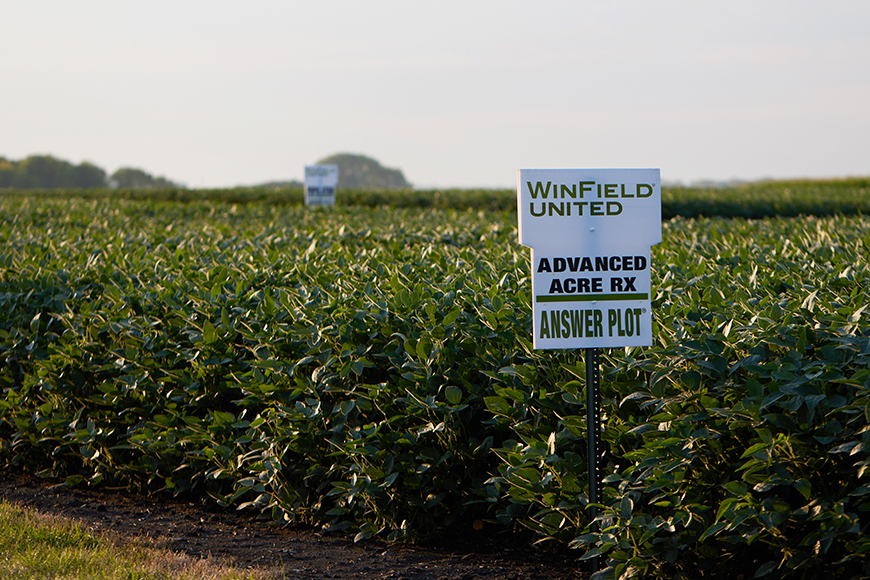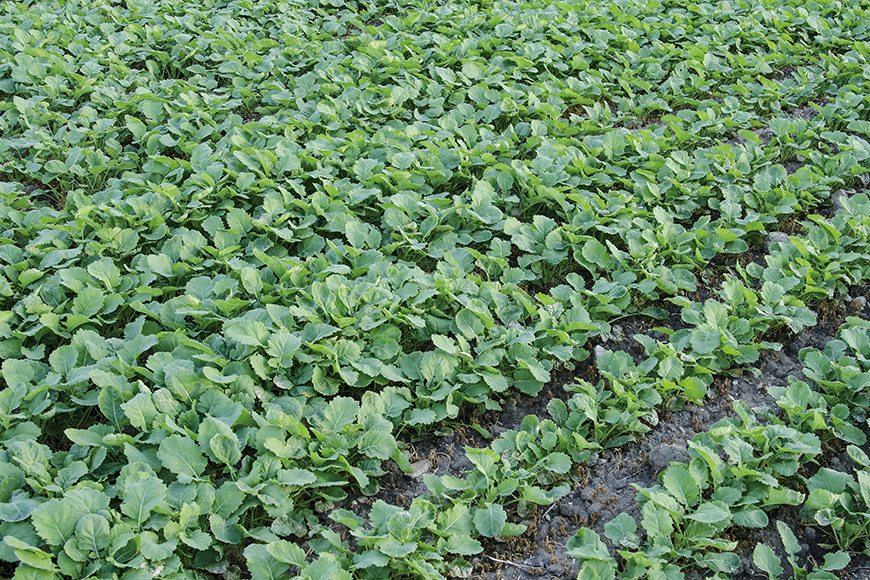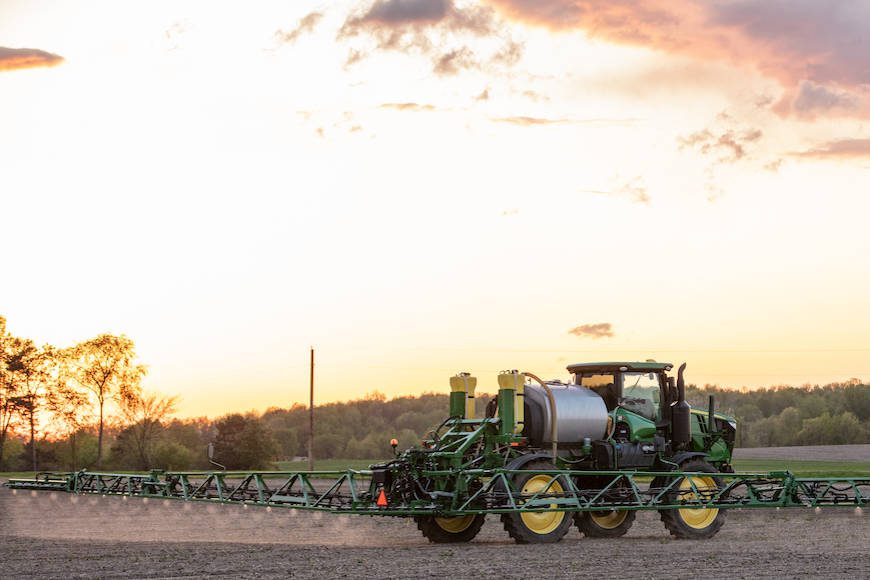Realize Sunflower Profits With Proper Grain Drying and Storage

As is the case with every crop, you put in a lot of hard work to optimize your sunflower yield potential throughout the growing season. Don’t let profits go to waste with improper grain storage. Use these drying and storage tips from North Dakota State University and Kansas State University extension services to help prevent insects and spoilage from impacting grain quality before the combines hit the fields.1
Crops are best stored when cool, dry and clean. Mold growth is based on temperatures and crop moisture content. The maximum recommended moisture contents of clean sunflower grains for storage with aeration is:
An effective way to help prevent dryer fires is to ensure the fan draws in clean air free of these hairs or fibers. This can be performed by using a portable dryer and turning the fan into the wind. Another option is to build an intake duct over the air inlet, which can help decrease the number of hairs and fibers drawn into a stationary dryer. Long snorkel tubes can be attached to the drying fan.
Guidelines for dryer use:
Be sure to remove large pieces of head and stalk as this is the highest moisture fraction of the seed. Early harvested seed contains 1-2% of the small flower (floret) that is fastened to each seed in the head. The florets disappear after a hard frost or later as the head dries out. The fraction of dockage containing florets is high in moisture and tends to heat in storage.
Seed cleaning is tough to accomplish during the busy harvest season, so plan on performing this work once fall fieldwork stops if you have a center unloading system and access to a seed cleaner. Trash is heaviest in the center of your bin, so that’s the best place to start.
Using airflow to control temperature is critical, as crops should be held near average outdoor temperatures during the fall. Doing so creates an unfavorable environment for fungi and insects and helps prevent moisture migration. Aeration helps maintain a uniform temperature throughout the seeds. Fans should be operated in the fall when the average outside air temperature is about 10-15 degrees F cooler than the stored sunflowers and turned off once the temperature of the stored seeds are uniform and near the outside temperature. Repeat this cycle whenever the average outside temperature is 10-15 degrees F lower than the seed temperature, or until the grain temperature reaches 25 degrees F.
A cooling cycle typically takes 5-7 days of continuous operation. Aerating for exactly a week should do the job and makes it easier to remember when to turn off the fan.
Follow the same procedure when warming seed in the spring, except in reverse. Aerate when the average outside temperature is about 10-15 degrees F higher than the seed temperature. Continue aerating in stages until the grain temperature is between 50-60 degrees F.
Cover the fans and unloading tubes when not aerating to keep natural air movement from over-cooling or drying the seeds near the ducts or floor. A canvas cover or plastic bag held in place with an inexpensive elastic cord works well. Temperature changes can occur, so make it a practice to remove the cover and operate the fan for about a day several times over the course of the winter, when outside temperatures are about the same as the grain temperature. This will help keep grain temperatures even.
With proper management, sunflowers can be dried and stored safely, provided you operate your aeration fans and keep the seeds at ideal temperatures. Some producers choose to not run the fans due to high energy costs. However, it’s critical to utilize the aeration system whenever necessary. Don’t let energy cost be a factor because you’ll get hit a lot harder if your grain spoils.
Looking for more sunflower storage tips, or have questions that are specific to your operation? Contact the grain drying and storage experts at your local university extension office. For additional agronomic insights related to growing sunflowers reach out to your local WinField® United retailer.
1 Drying and Storing Sunflowers, KSU Extension Service, Joseph P. Harner, based on numerous articles released by Dr. Kenneth Hellevang, NDSU Extension service engineer. sunflowernsa.com/uploads/3/drying_storing_sunflower_ksu.pdf.
All photos are either the property of WinField United or used with permission.
© 2021 WinField United. Important: Before use always read and follow label instructions. Crop performance is dependent on several factors many of which are beyond the control of WinField United, including without limitation, soil type, pest pressures, agronomic practices and weather conditions. Growers are encouraged to consider data from multiple locations, over multiple years and to be mindful of how such agronomic conditions could impact results. WinField® is a trademark of WinField United.
Drying Sunflowers
Sunflower seeds can be dried easily with relatively small quantities of moisture removed during the process. Producers have a tendency to over dry sunflowers due to their experience with corn. For example, drying corn from 25% to 15% moisture removes about 6.6 lbs. of moisture per bushel. Drying sunflowers, however, removes only about 3 lbs. of moisture per bushel when going from 20% to 10% moisture. To compensate for this, you’ll want to increase the flow rate through the dryer or decrease the drying air temperature.Crops are best stored when cool, dry and clean. Mold growth is based on temperatures and crop moisture content. The maximum recommended moisture contents of clean sunflower grains for storage with aeration is:
- Confectionary sunflower: 11% for short term i.e., less than 6 months and 10% for long term.
- Oil sunflower: 10% for short term and 7-8% for long term.
Preventing Dryer Fires
Drying sunflowers presents a greater risk of fire than other crops because the seed has fine hairs or fibers that can be rubbed off during handling. The hairs float in the air around the dryers and can ignite when drawn through the drying fan and open burner. This presents a fire hazard unless the ignited particles burn themselves out before contacting the sunflowers.An effective way to help prevent dryer fires is to ensure the fan draws in clean air free of these hairs or fibers. This can be performed by using a portable dryer and turning the fan into the wind. Another option is to build an intake duct over the air inlet, which can help decrease the number of hairs and fibers drawn into a stationary dryer. Long snorkel tubes can be attached to the drying fan.
Guidelines for dryer use:
- Use good housekeeping practices. Clean around the dryer and in the plenum chamber daily.
- Make sure all sections of recirculating-batch and continuous-flow dryers have continuous flow. Uneven flow will cause over-dried spots and increase fire hazards.
- Don’t leave drying equipment unattended.
Cleaning Sunflowers
Crops that contain substantial plant material are more susceptible to mold and insect damage, so cleaning your crop before storing can help reduce this hazard. Fines can accumulate under the down spouts and hinder aeration, making it difficult to maintain uniform air through the seeds. Stalks and trash have a higher moisture content, leading sunflowers to heat even though the seeds are below 9%.Be sure to remove large pieces of head and stalk as this is the highest moisture fraction of the seed. Early harvested seed contains 1-2% of the small flower (floret) that is fastened to each seed in the head. The florets disappear after a hard frost or later as the head dries out. The fraction of dockage containing florets is high in moisture and tends to heat in storage.
Seed cleaning is tough to accomplish during the busy harvest season, so plan on performing this work once fall fieldwork stops if you have a center unloading system and access to a seed cleaner. Trash is heaviest in the center of your bin, so that’s the best place to start.
Storing The Crop
Grain is a good insulator, so since you’ll likely fill the storage when temperatures are much warmer than winter temps. The crop in the center of the bin will hold its temperature from harvest even after outside temperatures have dropped well below freezing.Using airflow to control temperature is critical, as crops should be held near average outdoor temperatures during the fall. Doing so creates an unfavorable environment for fungi and insects and helps prevent moisture migration. Aeration helps maintain a uniform temperature throughout the seeds. Fans should be operated in the fall when the average outside air temperature is about 10-15 degrees F cooler than the stored sunflowers and turned off once the temperature of the stored seeds are uniform and near the outside temperature. Repeat this cycle whenever the average outside temperature is 10-15 degrees F lower than the seed temperature, or until the grain temperature reaches 25 degrees F.
A cooling cycle typically takes 5-7 days of continuous operation. Aerating for exactly a week should do the job and makes it easier to remember when to turn off the fan.
Follow the same procedure when warming seed in the spring, except in reverse. Aerate when the average outside temperature is about 10-15 degrees F higher than the seed temperature. Continue aerating in stages until the grain temperature is between 50-60 degrees F.
Cover the fans and unloading tubes when not aerating to keep natural air movement from over-cooling or drying the seeds near the ducts or floor. A canvas cover or plastic bag held in place with an inexpensive elastic cord works well. Temperature changes can occur, so make it a practice to remove the cover and operate the fan for about a day several times over the course of the winter, when outside temperatures are about the same as the grain temperature. This will help keep grain temperatures even.
With proper management, sunflowers can be dried and stored safely, provided you operate your aeration fans and keep the seeds at ideal temperatures. Some producers choose to not run the fans due to high energy costs. However, it’s critical to utilize the aeration system whenever necessary. Don’t let energy cost be a factor because you’ll get hit a lot harder if your grain spoils.
Looking for more sunflower storage tips, or have questions that are specific to your operation? Contact the grain drying and storage experts at your local university extension office. For additional agronomic insights related to growing sunflowers reach out to your local WinField® United retailer.
1 Drying and Storing Sunflowers, KSU Extension Service, Joseph P. Harner, based on numerous articles released by Dr. Kenneth Hellevang, NDSU Extension service engineer. sunflowernsa.com/uploads/3/drying_storing_sunflower_ksu.pdf.
All photos are either the property of WinField United or used with permission.
© 2021 WinField United. Important: Before use always read and follow label instructions. Crop performance is dependent on several factors many of which are beyond the control of WinField United, including without limitation, soil type, pest pressures, agronomic practices and weather conditions. Growers are encouraged to consider data from multiple locations, over multiple years and to be mindful of how such agronomic conditions could impact results. WinField® is a trademark of WinField United.




